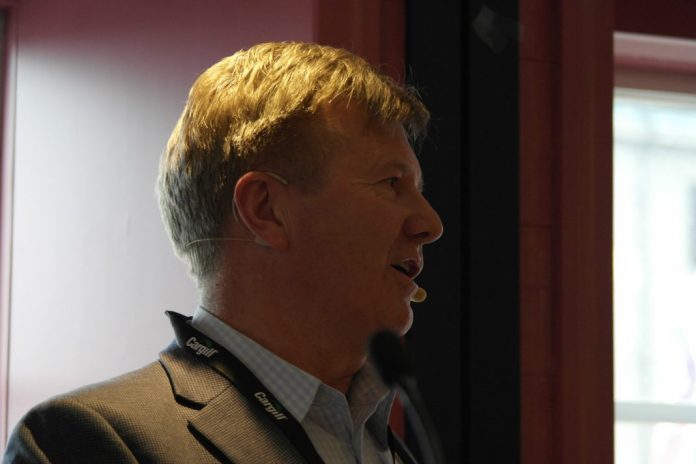RAS insurance is a money losing project, explained AXA XL Catlin’s global head of aquaculture insurance Geir Myre.
Land-based recirculating aquaculture systems, known as RAS, is the preferred form of growth in the aquaculture industry. Production of large smolt, in ever larger vessels and plants, helps to reduce production time in the sea – and exposure to salmon lice. At the same time, plans for new land-based salmon farms appear almost weekly on new markets.
The facilities must be insured, but do not appear as dream objects for an insurance company, at least not on a stand-alone basis.
Project
“(RAS has) less than 2% premium, but over 5% of the losses. This has so far been a loss making project for us.” That is what Geir Myre, global head of aquaculture insurance at insurance company AXA XL Catlin, said during a presentation during the North Atlantic Seafood Conference in Bergen on Tuesday.
Myre pointed to a number of risk factors related to water quality, biology, crew, technological risk, genetics and hydraulics.
Need expertise
“This is our insurance risk,” he said. “There are many small things that can go wrong. We need more expertise in place before we can assure it or if we are going to insure it.”
Myre pointed out that there are now plans to erect RAS plants with standing biomass of up to 45,000 tonnes of salmon.
“It is too much for one insurance company. Then we must have a consortium,” he pointed out.
Few providers
“But don’t get me wrong – we are not 100 percent negative. We want more facts on the table. We must investigate this and become more familiar with it,” emphasised Myre.
There is no flow of players who are engaged in biomass insurance in this segment.
“If you come with a RAS facility as a stand alone case, I will be surprised if you have more than two who can offer insurance. We are the only global player,” he added.


